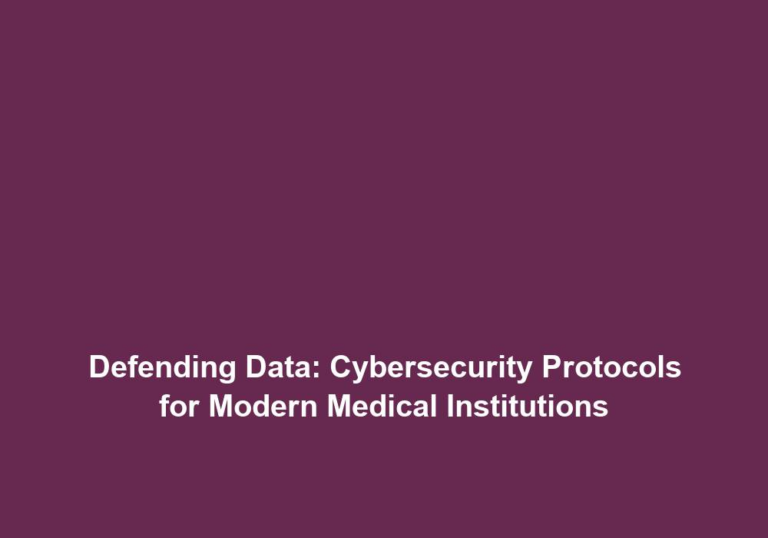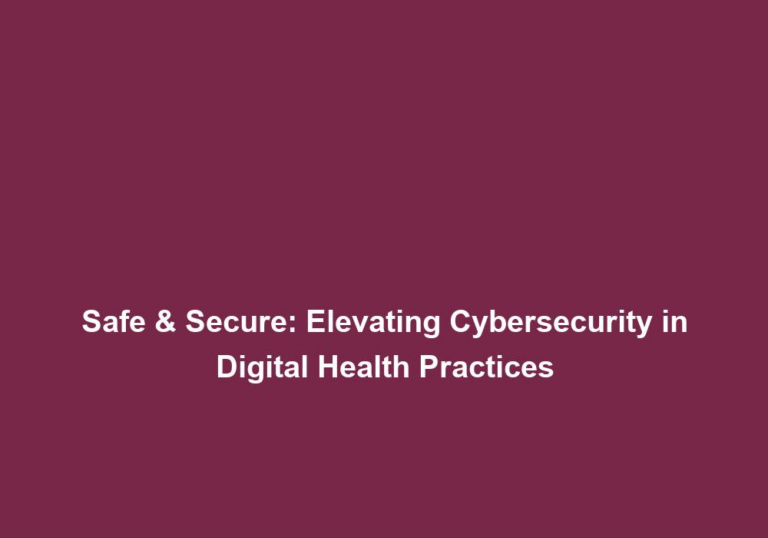Tech Health Check: The Importance of Regular Audits and Updates
In today’s fast-paced technological landscape, staying on top of regular audits and updates is crucial to ensure the optimal performance and security of your digital infrastructure. Neglecting these essential maintenance tasks can lead to various issues such as performance degradation, security vulnerabilities, and compatibility problems. In this article, we will explore the significance of regular audits and updates in the realm of technology, and why they should be an integral part of your organization’s strategy.
Why Should You Prioritize Regular Tech Audits?
Performing regular tech audits is akin to a comprehensive health checkup for your digital systems. It involves a systematic evaluation of hardware, software, networks, and security protocols to identify any existing or potential issues. Here’s why prioritizing tech audits is essential:
1. Enhancing Performance and Efficiency
Over time, technology becomes outdated, and its performance may start to degrade. Regular audits allow you to identify underperforming areas and take appropriate actions to optimize your systems. By identifying bottlenecks, outdated hardware or software, or inefficient processes, you can streamline operations, leading to enhanced performance and productivity.
Additionally, through regular audits, you can identify areas where performance can be improved. This can include optimizing software configurations, upgrading hardware components, or implementing more efficient processes. By addressing these issues, you can maximize the efficiency of your technology infrastructure and ensure smooth operations.
2. Ensuring Data Security and Privacy
Data breaches and cyberattacks are a constant threat in today’s digital landscape. Regular tech audits help you identify vulnerabilities and weaknesses that can be exploited by malicious actors. By conducting security audits, you can proactively address potential risks, fortify your defenses, and safeguard sensitive data and confidential information.
In addition to identifying vulnerabilities, regular audits also allow you to assess the effectiveness of your security measures. This can include evaluating your firewall configurations, access controls, encryption protocols, and data backup procedures. By staying proactive in your security efforts, you can minimize the risk of data breaches and protect your organization’s reputation.
3. Maintaining Regulatory Compliance
Many industries are subject to specific regulations and compliance requirements. Tech audits ensure that your systems meet these standards, reducing the risk of penalties, legal issues, and damage to your reputation. By regularly reviewing your technology infrastructure, you can ensure that your organization remains compliant with relevant laws and industry regulations.
Regular audits can help you identify areas where your organization may be falling short in terms of compliance. This can include ensuring the proper handling of sensitive data, implementing data retention policies, or adhering to specific security standards. By addressing these compliance issues, you can avoid potential legal consequences and maintain the trust of your customers and stakeholders.
4. Identifying Cost Optimization Opportunities
Outdated or redundant technologies can drain your resources and impact your bottom line. Regular tech audits enable you to identify areas where cost-saving measures can be implemented. By identifying obsolete hardware or software, you can plan for necessary upgrades or replacements, optimizing your technology expenses and improving overall cost efficiency.
During tech audits, you can assess the utilization of your technology infrastructure and identify areas where resources are being underutilized. This can include identifying unused licenses, consolidating hardware resources, or migrating to more cost-effective cloud solutions. By implementing these cost optimization measures, you can reduce unnecessary expenses and allocate resources more effectively.
5. Preparing for Future Growth
As your organization grows, so does its technology requirements. Regular tech audits help you assess whether your current infrastructure is capable of supporting future growth. By identifying potential scalability issues, you can plan for necessary upgrades or enhancements to ensure that your technology can accommodate increasing demands effectively.
Tech audits can help you determine whether your current technology infrastructure has the capacity to handle future expansion. This can include evaluating the scalability of your hardware, software, and network infrastructure. By identifying potential bottlenecks or limitations, you can make informed decisions regarding technology investments and ensure that your organization is well-prepared for future growth.
The Vital Role of Regular Updates
In addition to regular audits, keeping your systems up to date through timely updates plays a pivotal role in maintaining a healthy technology ecosystem. Here’s why regular updates are crucial:
1. Patching Security Vulnerabilities
Software updates often include security patches that address known vulnerabilities. By promptly applying these updates, you can protect your systems from potential exploits and reduce the risk of unauthorized access, data breaches, and other security incidents.
Regular updates ensure that your systems are equipped with the latest security patches, protecting them from emerging threats. This includes updating operating systems, software applications, antivirus programs, and other security-related components. By staying up to date with these updates, you can minimize the risk of security breaches and maintain the integrity of your technology infrastructure.
2. Ensuring Compatibility and Performance
Updates frequently include bug fixes and performance enhancements. Applying these updates ensures that your software and systems remain compatible with the latest hardware, security protocols, and industry standards. This compatibility ensures optimal performance, stability, and a seamless user experience.
By regularly updating your software and systems, you can ensure that they are compatible with the latest technologies and industry standards. This can include updating drivers, firmware, and software applications to ensure optimal performance and prevent compatibility issues. By doing so, you can enhance the overall user experience and avoid potential disruptions caused by outdated or incompatible software.
3. Accessing New Features and Functionality
Software updates often introduce new features, enhancements, or functionality that can improve productivity, user experience, or overall system capabilities. By regularly updating your software, you can take advantage of these improvements and stay ahead of the curve.
Regular updates allow you to leverage the latest features and functionality introduced by software developers. This can include improvements in user interfaces, increased automation capabilities, or enhanced integration with other systems. By staying up to date with these updates, you can maximize the value of your software investments and gain a competitive edge in the market.
4. Mitigating Software Incompatibilities
As software evolves, older versions may become incompatible with newer applications or systems. Regular updates help you stay up to date with the latest software versions, ensuring seamless integration and avoiding compatibility issues that can hinder productivity or disrupt your operations.
Regular updates ensure that your software remains compatible with other systems and applications used within your organization. This can include updating software dependencies, libraries, or plugins to maintain compatibility with the latest technologies. By doing so, you can prevent disruptions caused by software incompatibilities and ensure smooth operations.
Best Practices for Conducting Tech Audits and Updates
To ensure the effectiveness of your tech audits and updates, consider the following best practices:
-
Establish a Regular Schedule: Set a recurring timeframe for conducting audits and updates. This promotes consistency and prevents tasks from being overlooked amidst other priorities.
-
Document Your Systems: Maintain accurate documentation of your technology infrastructure, including hardware specifications, software versions, and network configurations. This documentation serves as a valuable reference during audits and updates.
-
Engage Expertise: Consider leveraging the expertise of IT professionals or managed service providers to conduct thorough tech audits and manage updates. Their specialized knowledge and experience can ensure comprehensive evaluations and efficient implementation of necessary updates.
-
Test Updates in a Controlled Environment: Before applying updates to your production systems, test them in a controlled environment. This allows you to identify any potential issues or conflicts before they impact your operational systems.
-
Monitor and Evaluate: Continuously monitor your systems, even after conducting audits and updates. Regularly evaluate performance, security, and compliance to identify any emerging issues or new requirements that may necessitate additional audits or updates.
By following these best practices, you can establish a robust framework for conducting regular tech audits and updates, ensuring the long-term health, security, and performance of your technology infrastructure.
In conclusion, regular audits and updates are vital for maintaining the optimal performance, security, and efficiency of your technology infrastructure. By prioritizing these tasks, you can identify and address potential issues proactively, mitigate security risks, optimize costs, and ensure the compatibility and scalability of your systems. Embrace the importance of regular tech health checks, and let them become an integral part of your organization’s technological strategy.






